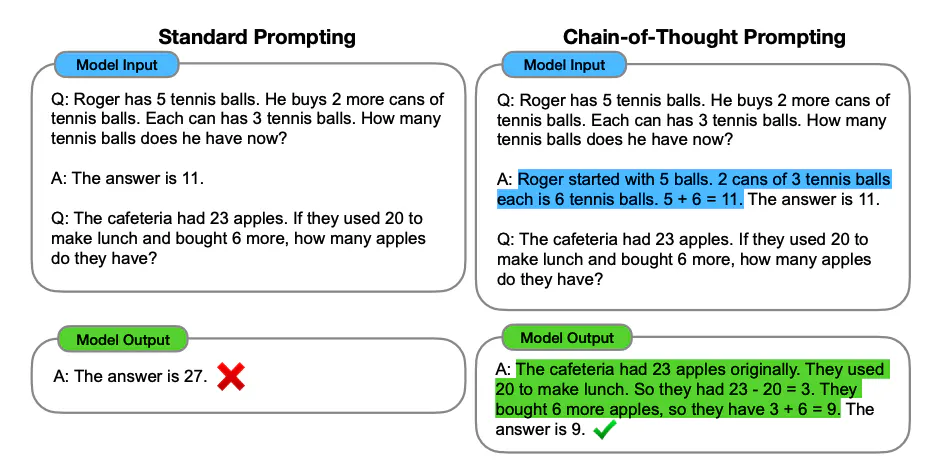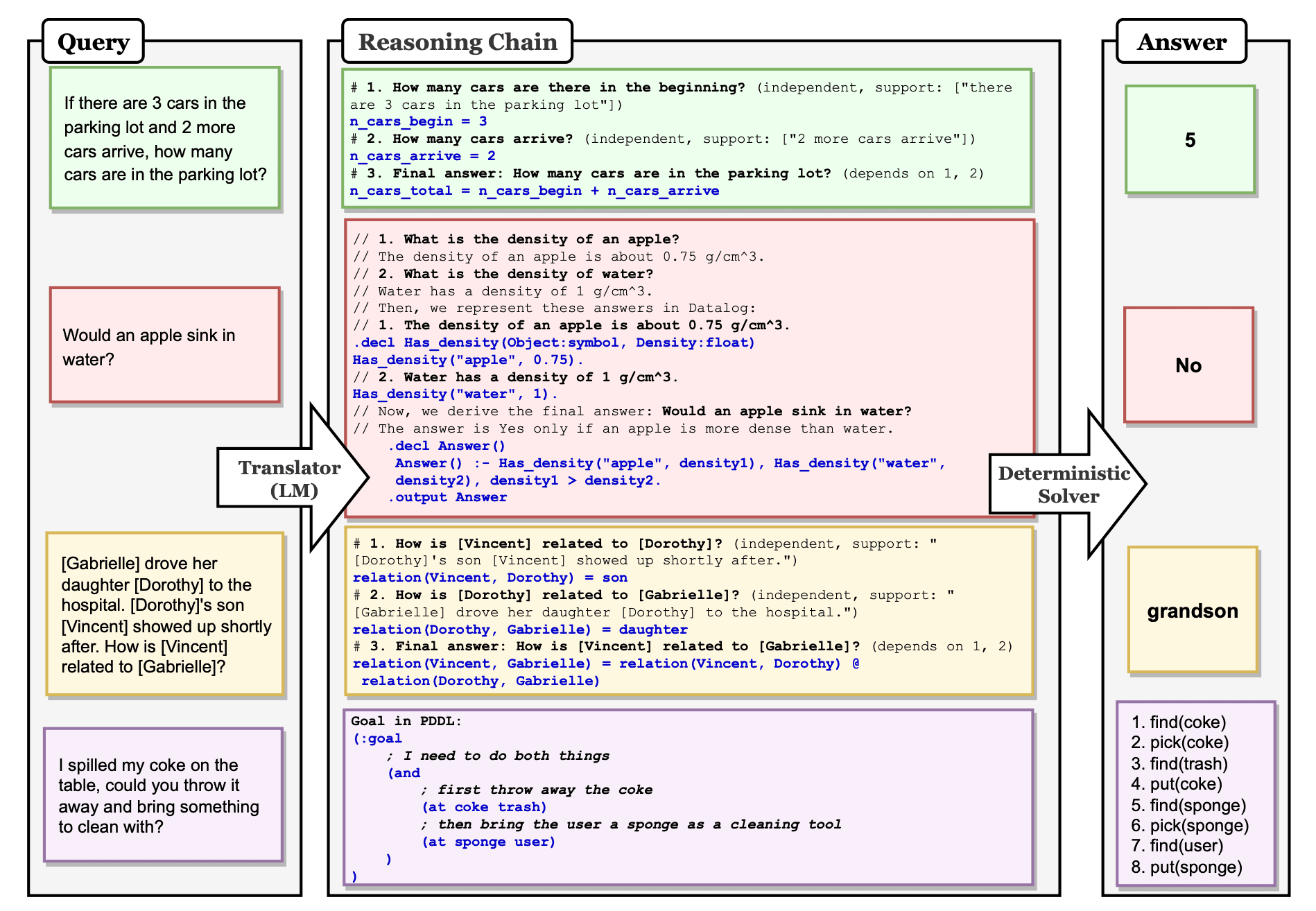- Published on
Paper study - Faithful Chain of Thought Reasoning
- Authors

- Name
- Jeongwon Park
Introduction
In this post, I'll summarize what I learned from the concept of faithful chain-of-thought reasoning, as introduced in Lyu et al. (2023). Before diving into faithful chain-of-thought reasoning (which I'll refer to as faithful CoT), it's important to first understand what chain-of-thought reasoning is. Chain-of-thought (CoT) is a prompting technique that enables models to solve complex questions requiring multiple steps, such as math word problems (MWP), multi-hop QA, planning, and more. It works by guiding the model through simpler, intermediate steps to reach the final solution.
 Image source: Wei et al. (2022)
Image source: Wei et al. (2022)Even though CoT technique helps language model solve complex reasoning tasks, it's not always faithful - meaning the generated intermediate steps don’t always lead the model to the correct answer. This can be risky, as an unfaithful model might produce results that seem plausible but are incorrect.
Faithful CoT
Faithful CoT is introduced to improve the faithfulness of the CoT technique by involving two stages: Translation and Problem solving.
 Image source: Lyu et al. (2023)
Image source: Lyu et al. (2023)Translation
During the translation stage, the language model generates a reasoning chain based on the input query. This reasoning chain consists of both a natural language (NL) reasoning chain and a symbolic language (SL) reasoning chain. The NL component breaks down the original query into multiple simpler, interdependent subproblems. Each subproblem is then addressed using a task-specific SL, such as Python, Datalog, or Planning Domain Definition Language (PDDL).
Problem solving
symbolic language (SL) is a part of the result from the transation stage, which can be executed with deterministic solver such as Python, Datalog, or PDDL.
 Image source: Lyu et al. (2023)
Image source: Lyu et al. (2023)The image above illustrates how Faithful CoT works across different types of tasks, such as MWP, multi-hop QA, relational inference, and planning. Using a prompted language model (CoT with few-shot prompting), the NL query is divided into subquestions, with the appropriate SL applied at each stage. The NL reasoning chain consists of three key components:
- subquestions: Natural language subquestions that break down the initial query into simpler steps.
- dependency graph: Indicates whether each subquestion is independent or dependent on previous question(s).
- rationales: Supporting information for solving the subquestion. Rationales can come from parts of the initial query or general knowledge.
After that, the SL reasoning chain is generated based on the components of the NL reasoning chain. Using these executable SL reasoning steps, the final answer can be obtained with a designated solver.
Limitation
While the problem-solving part (especially with Python) is faithful, the translation process remains unclear. This means that the language model's generation of the reasoning chain from the natural language query is still not self-interpretable.
Conclusion
Faithful CoT is an improved version of the standard CoT, integrating a reliable solver to generate answers. While there are still areas for improvement, especially in the translation stage, I believe this technique can be useful for certain mathematical tasks. For the prompts I created for the LM model in Earthmera, I used plain text to calculate the CO2 reduction for actions in the input image or video. However, with faithful CoT, I think I could achieve more reliable results.